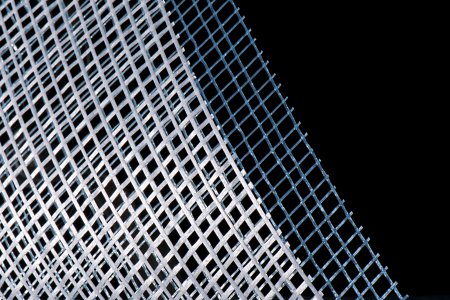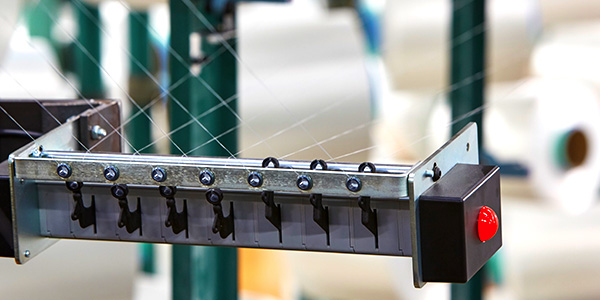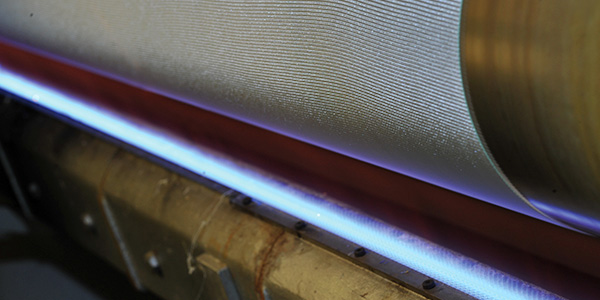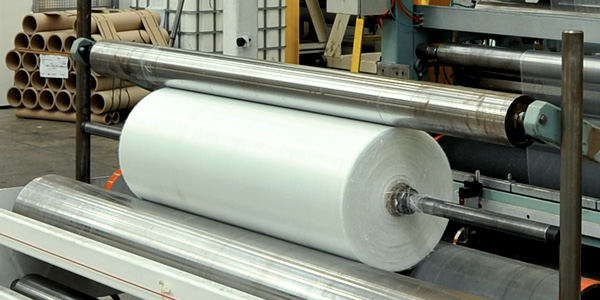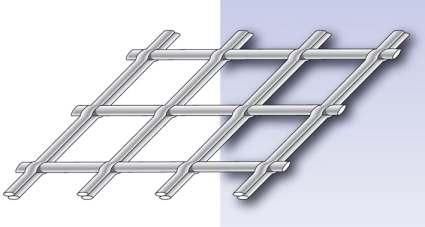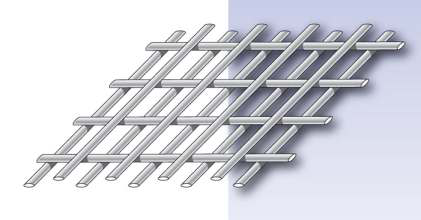A laid scrim looks like a grid or lattice. It is made from continuous filament products (yarns).
In order to keep the yarns in the desired right-angled position it is necessary to join these
yarns together. In contrast to woven products the fixation of the warp and weft yarns in
laid scrims must be done by chemical bonding. weft yarns are simply laid across a bottom
This is achieved through a manufacturing process.
The laid scrim is produced in three basic steps:
STEP 1: Warp yarn sheets are fed from section beams or directly from a creel.
STEP 2: A special rotating device, or turbine, lays cross yarns at high speed on
or between the warp sheets. The scrim is immediately impregnated with an adhesive system to ensure the fixation of machine- and cross direction yarns.
STEP 3: The scrim is finally being dried, thermally treated and wound on a tube
The specifications of our Laid Scrims:
| Width: | 500 to 2500 mm | Roll Length: | Up to 50 000 m | Yarns Type: | Glass, polyester,carbon | ||||||||
| Construction: | Square, tri-directional | Patterns: | From 0.8 yarns/cm to 3 yarns/cm | Bonding: | PVOH, PVC, Acrylic, customized | ||||||||
The advantages of Laid Scrims:
Generally laid scrims are about 20 - 40 % thinner than woven products made from the same yarn and with an identical construction.
Many European standards require for roofing membranes a minimum material coverage on both sides of the scrim. Laid scrims help to produce thinner products without having to accept decreased technical values. It is possible to save more than 20 % of raw materials such as PVC or PO.
Only scrims permit production of a very thin symmetrical three layer roofing membrane (1.2 mm) that is often used in Central Europe. Fabrics cannot be used for roofing membranes that are thinner than 1.5 mm.
The structure of a laid scrim is less visible in the final product than the structure of woven materials. This results in a smoother and moreeven surface of the final product.
The smoother surface of final products containing laid scrims allows to weld or glue layers of the final products more easily and durably with each other.
The smoother surfaces will resist soiling longer and more persistently.
The use of glassfibre scrim reinforced nonwovens per-mits higher machine speeds for the production of bitu-men roof sheets. Time and labour intensive tears in the bitumen roof sheet plant can therefore be prevented.
The mechanical values of bitumen roof sheets are sub-stantially improved by scrims.
Materials that tend to tear easily, such as paper, foil or films from different plastics, will be prevented from tearing effectively by laminating these with laid scrims.
Whilst woven products may be supplied loomstate, a laid scrim will always be impregnated. Due to this fact we have an extensive knowledge in respect to which binder may be best suited to different applications. The choice of the right adhesive may enhance the bonding of the laid scrim with the final product considerably.
The fact that the upper and lower warp in laid scrims will always be on the same side of the weft yarns guarantees that the warp yarns will always be under tension. Therefore tensile powers in warp direction will be absorbed immediately. Due to this effect, laid scrims often show a strongly reduced elongation.When laminating a scrim between two layers of film or other materials, less adhesive will be needed and the cohesion of the laminate will be improved.The production of scrims always requires a thermal drying process. This leads to preshrinking of the polyester and other thermoplastic yarns which will improve substantially subsequent treatments done by the customer.
Typical constructions of Laid Scrims:
Single warp
This is the most common scrim construction. The first warp* thread under a weft** thread is followed by a warp thread above the weft thread. This pattern is repeated across the whole width. Typically the spacing between the threads is regular across the whole width. At the intersections two threads will always meet each other.
* warp = all threads in machine direction
** weft = all threads in cross direction
Double warp
The upper and lower warp threads will always be placed one upon the other so that the weft threads will always be fixed between an upper and a lower warp thread. At the intersections three threads will always meet each other.
Scrim nonwoven laminates
A scrim (single or double warp) is laminated onto a nonwoven (made from glass, polyester or other fibres). It is possible to produce laminates with nonwovens weighing from 0.44 to 5.92 oz./sq.yd.

